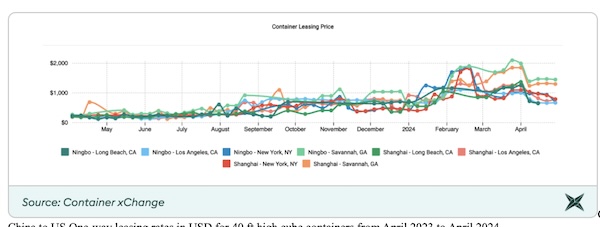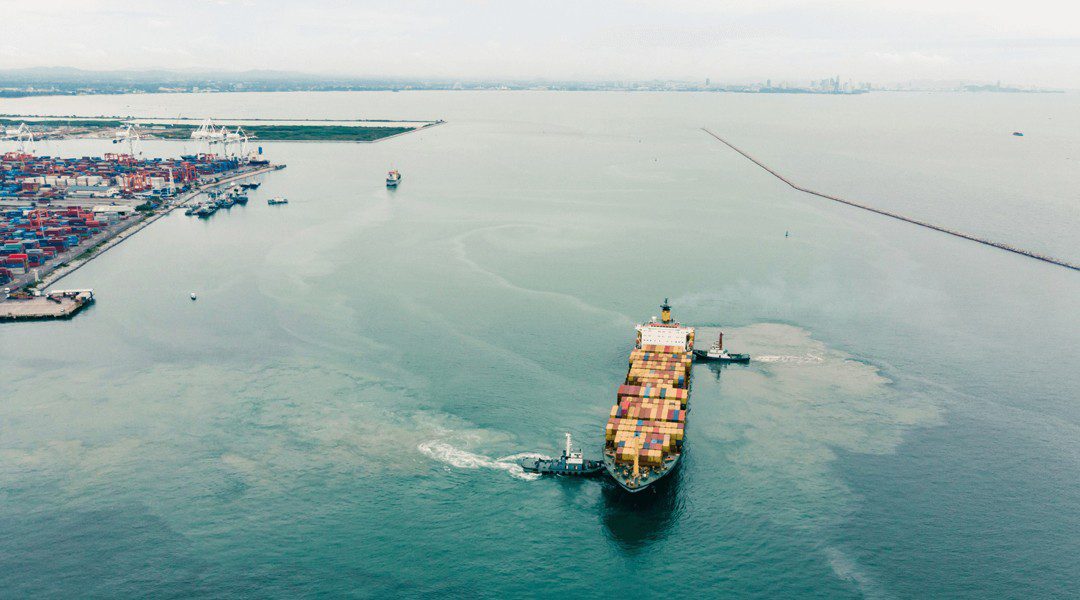These are the insights revelations by Container xChange, an online container logistics company, based in Hamburg.
“China’s container market has always been dynamic, but recent developments have triggered significant price hikes,” noted a Container xChange customer and container trader based in China. “Container prices are continuously climbing, adjusting roughly every 48 hours. This increase largely stems from uncertainty related to the Red Sea situation, as well as suppliers and sellers looking to hedge their risks. We’ve seen prices for a 40 ft (cargo worthy) container jump from $2,200-$2,300 in April to $2,500-$2,700 currently.”
Another customer from China added, “In April, shipping lines and leasing companies placed new orders of more than 1000,000 TEU, factories are fully occupied till the end of July, and some factories are even occupied until September. Some container sellers are holding up the inventory, in anticipation of price hikes in May.”
An analysis from Container xChange’s trading and leasing platform showed that the container trading and leasing prices continue to rise Ex China to Europe and to the US in April.
It also points that the volatility in container prices is much more evident since the beginning of this year (2024) until April as compared to the last year (2023).
“Despite the recent price hikes, we’re observing a market that is not yet fully tight. Containers are still available, depots are not operating at full capacity, and while prices are increasing, it’s not at the rapid rate we saw during the post-COVID demand pent-up period. The situation is improving for stakeholders, but not significantly. Demand prospects remain subdued, and the price hikes are primarily driven by uncertainty rather than purely by demand. This market condition requires stakeholders to remain vigilant and informed of current market currents, invest in cost optimisation strategies and develop algorithms for demand and supply forecasting.” inferred Christian Roeloffs, cofounder and CEO of Container xChange, the world’s leading platform for container trading and leasing.
Depots Operate Below Full Capacity: A Closer Look at Container Inventory Pressures
Container xChange surveyed depot owners to assess their capacity utilization since the Houthi attacks in the Red Sea. The majority reported operating below full capacity, particularly in China, indicating that depots there are not facing significant pressure from container inventory. In contrast, depots in the US and Europe reported higher utilization rates.
Despite depots not facing significant pressure from container inventory, there remains a question of where the pressure lies in soaking up the excess containers in the market.
Two possibilities are apparent:
First, the diversions of vessels around the Cape of Good Hope impact both vessel capacity and the container fleet. If diversions soak up 10% of vessel capacity, and vessels can carry over 24,000 TEUs on average, a significant number of containers are absorbed en route.
Second, a substantial number of containers are stranded in network locations with a structural surplus of container inventory. Shipping these containers out may not be economically feasible due to factors such as high transportation costs, inexpensive storage at the location, or the containers nearing the end of their operational life.
Another key finding from the survey reveals that depot owners reported increased costs in two major heads since the beginning of the Houthi attacks – equipment usage fees and storage space rentals. Other overheads that have witnessed cost increases over the past five months include administrative fees, container handling charges, daily and monthly storage fees, demurrage fees, and security and surcharge fees.
Average container price trends across transhipment ports
Ports such as Ningbo, Qingdao, Shanghai, and Busan experienced price increases over the 11-month period (June 2023 to April 2024). Ports like Antwerp and Rotterdam saw relatively stable prices, with minor fluctuations observed. While Singapore experienced moderate fluctuations, average container prices overall showed a slight decrease. The increase in prices in Northeast Asia suggests a robust market for transshipment services, driven by factors such as regional trade dynamics and economic growth.

Chart 1: Average container prices for 40 ft high cube cargo worthy containers across the top transhipment ports worldwide
Container rates continue to rise
The accompanying chart (below) details the fluctuations in container leasing rates for the Shanghai to Long Beach route, illustrating a clear pattern of volatility beginning in November, as compared to pre-Houthi attacks period in the chart. This trend of escalating leasing rates aligns with the geopolitical tensions observed during this period. The data encapsulates not only the changes in average container prices but also variations in free days and per diem rates, offering a comprehensive view of the evolving leasing landscape.

Chart 2: Shanghai to Long Beach One-way leasing rates in USD for 40 ft high cube containers from April 2023

Chart 3: China to US One-way leasing rates in USD for 40 ft high cube containers from April 2023 to April 2024
The volatility is particularly pronounced from November 2023, where the price almost doubled from $370 in October 2023 to $610 in November 2023, and continued to escalate rapidly, reflecting heightened market sensitivity to external pressures and the quick adjustment of the market to these realities.
“Given the steep rise in rates over a relatively short period, stakeholders should prepare for continued volatility. Companies need to adjust their logistical strategies, potentially locking in rates or exploring alternative routes or solutions to mitigate the financial impact of further expected increases in leasing costs, especially Ex China.” suggested Roeloffs.
Similar observations were made on routes Ex shanghai to Rotterdam, Hamburg and Antwerp. Clearly, the container market has heatened up as the market volatility increases.
“As geopolitical tensions continue to escalate, economies are strategically adding stops to their cargo routes to mitigate risks and ensure the smooth flow of goods. The importance of transshipment hubs is becoming increasingly evident, as they play a crucial role in facilitating these complex supply chains. This shift emphasizes the need for flexibility and strategic planning in global trade, as businesses navigate a rapidly changing environment.” shared Christian Roeloffs, cofounder and CEO of Container xChange.
What lies ahead for container prices in May?
Our proprietary Container Price Sentiment Index (xCPSI) gauges industry sentiment regarding the anticipated development of container prices in the upcoming weeks. This index is derived from concurrent surveys conducted with our customers, network partners, and online communities.
This month, the xCPSI echoed stable optimism, with ratings ranging from 34 to 46 points on a scale of 0-100. Following the Baltimore bridge collapse, the xCPSI surged to 61 points but subsequently settled back into the 34-to-46-point range. This suggests a consistent expectation of stable and gradual increases in container prices among the global freight forwarding, container trading, and supply chain community.

Chart 4: Container Price Sentiment Index (xCPSI) by Container xChange as on 2 May 2024
As global trade becomes increasingly complex, it’s crucial for businesses to monitor transshipment hubs closely to plan their container journeys effectively. The evolving landscape of container journeys requires a deeper understanding of market and business intelligence to navigate efficiently. With China’s container market experiencing heightened activity, it’s more important than ever for stakeholders to keep a close eye on developments in the region to stay informed and make strategic decisions.
Download the report from here for free –
Source: ContainerxChange





